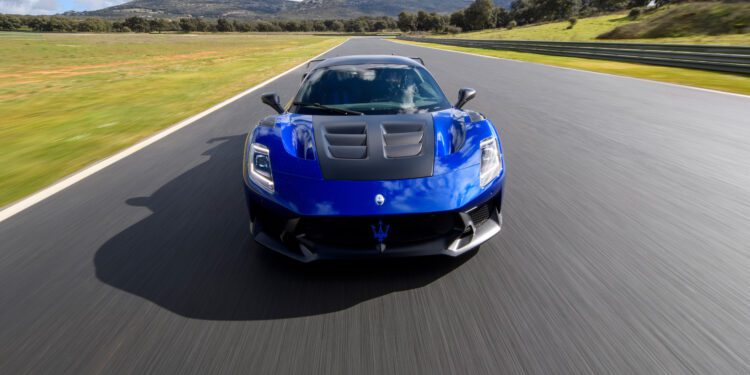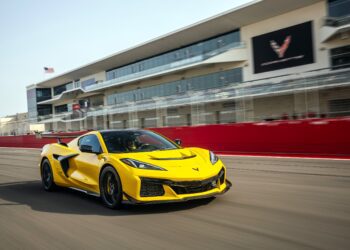The delta between a road car and a purpose-built track machine is more often a spectrum than a gap. Porsche markets its GT3 and GT3 RS as circuit-ready machines, even if the latter is far more hardcore than the former. Think of the SF90 Asseto Fiorano versus the SF90 XX in Ferrari terms. Although one could make a compelling argument that any supercar should be track-worthy, I’ll stick to the specials for brevity.
Last year, during The Quail, A Motorsports Gathering in Monterey, Maserati pulled the covers on its first limited-run special since the Enzo-based MC12. Yet, the Maserati GT2 Stradale shows its hand long before you step into its Sabelt carbon buckets, strap in your four-point harness, or peer through its raked windshield at its vented hood and fenders.
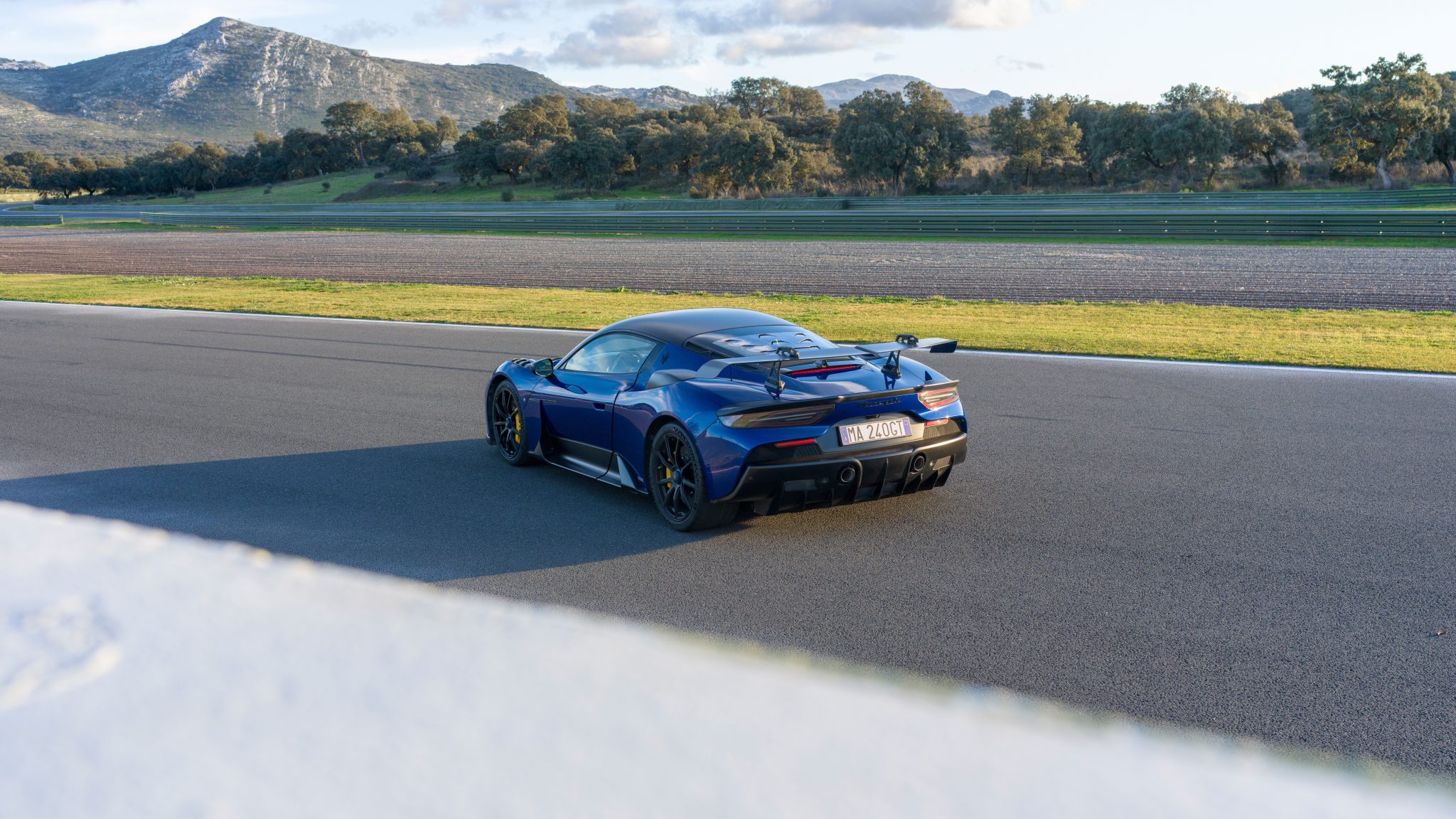
Its name drops all reference to the MC20 supercar that serves as its base while simultaneously aligning the Stradale with the championship-winning GT2 racecar with which it shares a name. As I stand by the pits at the Circuito Ascari in Málaga, Spain, watching a GT2 barreling towards the uphill section that makes up turns one and two, I’m left wondering: is the Stradale a proper track car or just an MC20 in a borrowed racing suit?
I, unfortunately, have to start with an apology. As long of a circuit as Ascari is in its complete configuration, throwing 26 corners at you in just under 3.4 miles, my time on it is scheduled to be frustratingly brief. Maserati’s itinerary only allows for a total of eight laps over two stints for a total of around 20 minutes on track. I’ll be learning the GT2 and Ascari simultaneously.
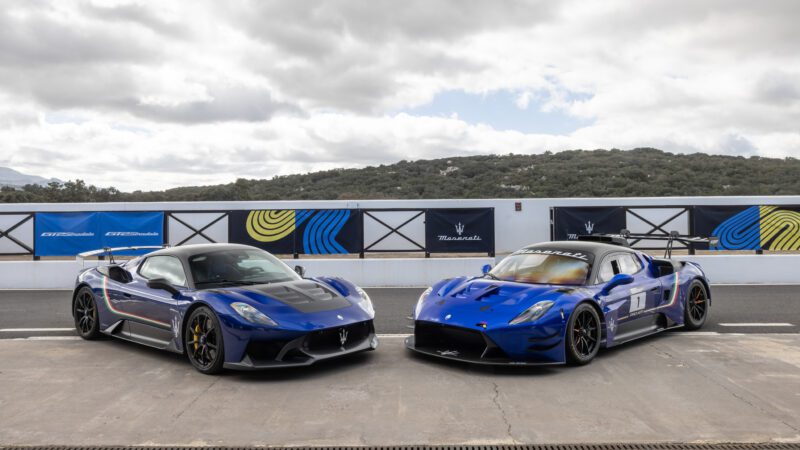
Long before I ever throw a helmet on, Maserati points me into one of the open garages where a GT2 Stradale sits next to the racecar that inspired it. Although inspired is the wrong word, given that the same engineering and design teams developed the pair in tandem. With the two side by side, the visual ties between the road car and the racer are unmistakable.
Both GT2s sport widened shark nose grilles, vented hoods, louvered fenders, enlarged side intakes for improved cooling, and enormous adjustable swan-neck wings. The Stradale shrinks the racecar’s components to road car size. However, built by such a style-focused brand, you can bet that Maserati gave it a boomerang-style spoiler as much to achieve its peak 1,102-pound downforce figure as for dramatic effect.
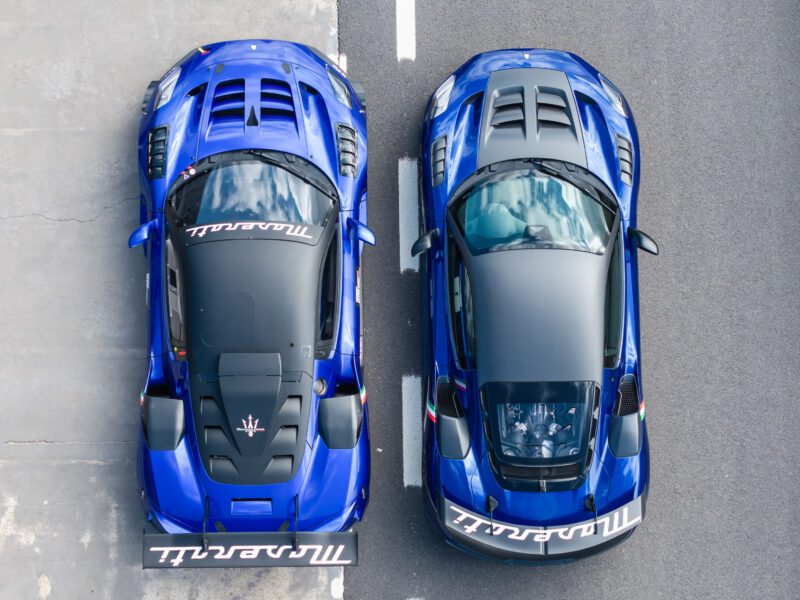
Whereas the MC20 wears an elegant and subtle aesthetic, the GT2’s visual presence creates a more lasting impact. It’s just more exciting to look at. Even if its aggressive aero, forged 20-inch center-lock wheels, and matte carbon panels end up being no more than racecar cosplay, at least it’s a sharp-looking costume.
As Maserati’s engineers rattle off stats with my time on track approaching, my expectations for the GT2 Stradale only increase. It shaves 132 pounds over a standard MC20 through a strict carbon fiber diet while its spring rates rise by eight and ten percent front to rear. Meanwhile, its 3.0-liter V6 sports revised turbochargers and new exhaust manifolds to support higher boost pressure, upping its output to 631 horsepower and 531 pound-feet of torque.
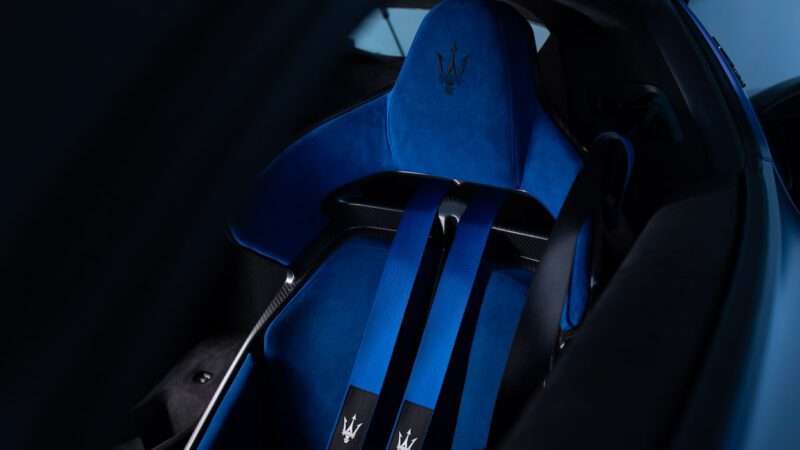
An optional $13,750 Performance Pack fitted to my test car swaps the GT2’s ventilated steel brakes for upsized carbon ceramics, wraps its center-lock wheels in semi-slick Michelin Cup 2R rubber, and trades a mechanical limited-slip differential for an electronically controlled unit in the rear. To capitalize on this new hardware, the pack adds four adjustable sub-modes within the top Corsa setting, allowing you to further dial your traction control, stability control, e-LSD, and ABS settings.
A call from the clipboard-wielding woman in charge of corralling my group means it’s time to get in the car finally. As if the 2 hours of standing around before my 20 minutes on the circuit wasn’t bad enough, I soon learn I’ll be chauffeuring an instructor the whole time. So much for those hard-fought weight savings.
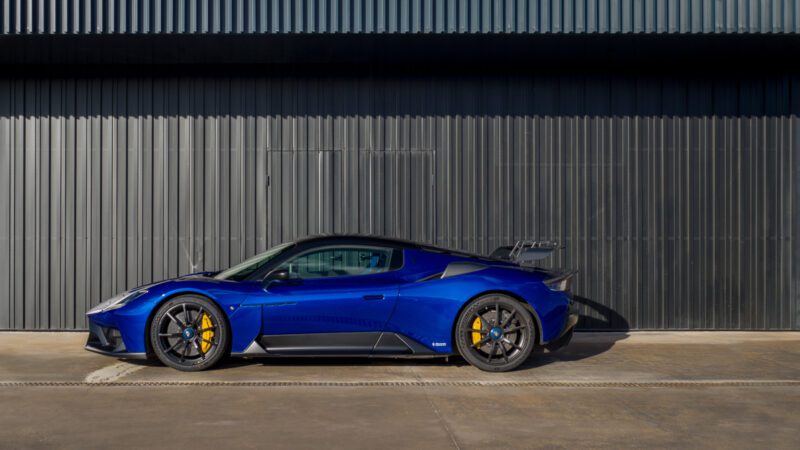
Shortly after exiting the pit lane, a small crest drops us into turns three and four, also known as “The Screw.” Even with such a short stint ahead, the vocal instructor insists that I start and stay in Sport mode, the middle of three core options if you don’t count the superfluous Wet setting. While this slight firms up this car’s dampers, quickens shifts, and relaxes its stability control system, it instantly becomes apparent that it’s not up for track duty.
Tipping the scales at a claimed dry weight figure of 3,009 lb (closer to 3,200 lb with fluids), the Maserati GT2 Stradale is light even by modern supercar standards. Yet, even this featherweight squats under acceleration and dives under heavy braking in its Sport setting. The nose dips so much that the Stradale’s carbon splitter eventually makes contact with the tarmac below, shedding precious layers of clear coat.
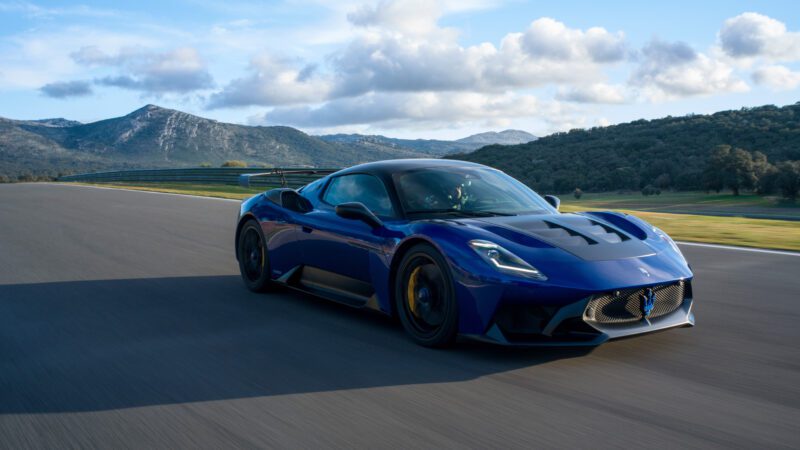
With my first ten minutes on track gone in 60 seconds, I’m back in the pits, tailing an engineer to ask about this car’s softly sprung nature. The answer is telling. At its core, the GT2 Stradale inherits the racecar’s carbon tub structure, a chassis that the racer borrows from the MC20. As such, the Stradale’s dampers carry over from the MC20 with no physical updates, just recalibrated software. Only its springs are new, being slightly firmer, taller, and sporting a wider diameter.
When asked why this car’s suspension wasn’t stiffened further, the engineer pointed out that the GT2 Stradale doesn’t need to be firmer due to its chassis’ high torsional rigidity and lack of excess weight. However, as I’m still within sight of a front splitter with exposed carbon fibers shimmering under the Spanish sun, that’s a difficult reality to accept.
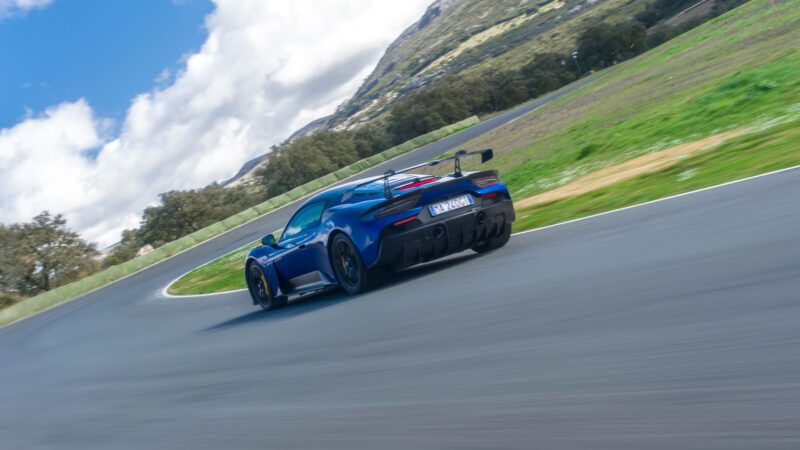
The woman with the clipboard hollers, and I’m back in the car, strapping my harness and settling into its carbon buckets. The instructor says we’re in the top Corsa mode next. I try not to sound too excited at the prospect of properly driving the car I flew halfway around the world to experience. We set off, but the excitement doesn’t last.
As I try to pick up the pace, my passenger chimes in for me to upshift midway through the rev range. With peak power not coming on until 7,500 rpm, tugging the column-mounted paddle at 4,500 rpm seems like a waste. The instructor insists. Even as we come on to the final straight, blasting by the pits, the call to upshift early comes again.

By the time I roll back into the pits at the end of this second stint, I’m mentally drained from juggling a new track, the GT2, and a constant stream of directions. Just as I get ready to talk away, feeling as if I’ve learned nothing, Maserati North America’s generous head of communications informs me that he’s secured me a third session, this time all on my own.
As the writer in the car ahead reaches the track’s midpoint, I get the green light to set off for the final time. Instantly, the single-passenger GT2 Stradale feels quicker on its feet. Freed to pick up the pace, I push at full throttle down the first straight, this time clicking up a gear only when the steering wheels shift lights fully illuminate.
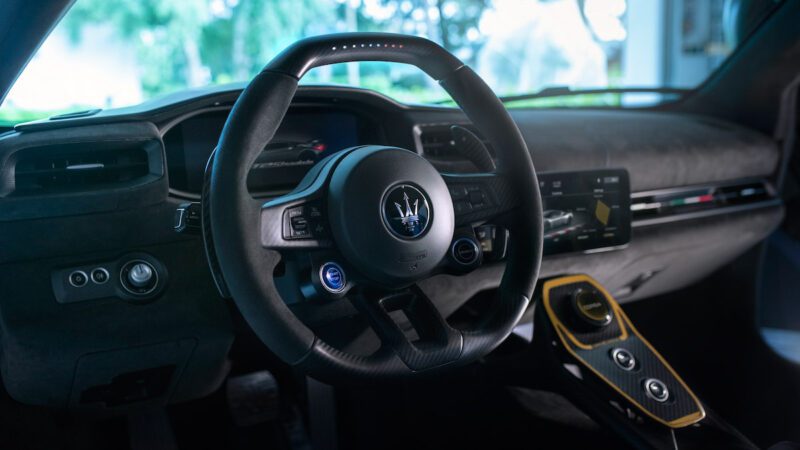
The GT2’s acceleration is, to use the correct term, batshit quick. It may generate 40 fewer horses than an Artura, but the GT2’s acceleration feels practically identical outside of instrumented testing. Yet, it doesn’t feel any more rapid than a standard MC20. It might sound surprising until you learn that the Stradale only develops ten extra horses while its torque output dips by seven lb-ft.
By sending that power to the rear wheels via the same eight-speed dual-clutch transmission as the MC20, its 2.8-second time to 62 mph and 201 mph top speed remain unchanged. Thankfully, a new exhaust system allows its 3.0-liter twin-turbocharged 90-degree V6 to hold a low-toned note that practically buzzes as you approach its 8,000 rpm redline.
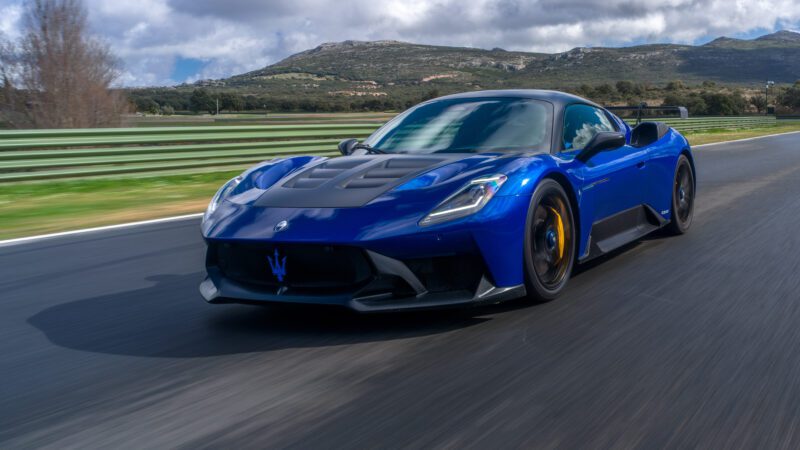
On Ascari’s ultra-fast sweepers, this car’s lateral grip is impressive, made possible by its new aero components and a fresh set of semi-slick tires. This car’s front end is agile and instantly responsive in the slower sections. However, even in its top Corsa setting, the Stradale’s soft dampers struggle to mitigate excess body motions through tighter turns.
While its electric power steering rack is quick, it doesn’t pick up enough weight under load or reward you with tactile feedback. As precise as the Stradale’s steering is, its vagueness leaves you wondering how much grip you have as you pick up the pace. It’s effective but far from engaging.
It’s a similar story with its carbon ceramics and the GT2’s brake-by-wire system. While its unique set of Brembos are powerful and certainly more progressive than you’d get in something like a Corvette Z06, they’re utterly devoid of feedback. You’ll hear this car’s flashers go off as you lean hard on the brakes before the pedal indicates you’re approaching its limits. Again, highly effective but not particularly involving.
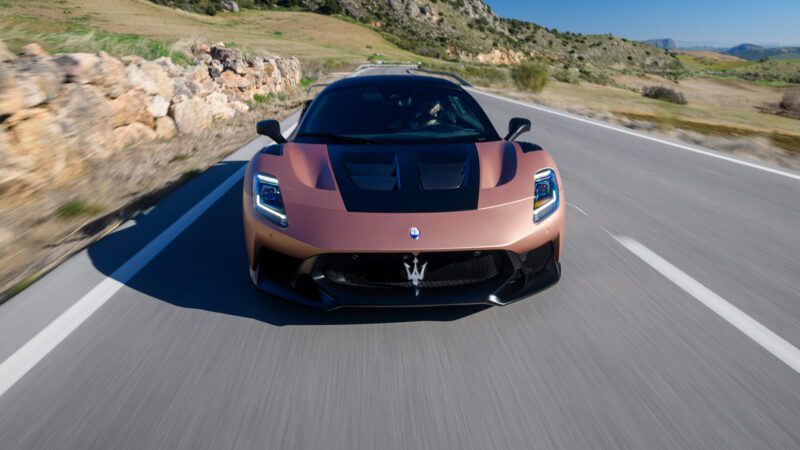
As I pull into the pits for the final time, another GT2 Stradale awaits me for the drive home. On the winding roads surrounding the famed circuit, this Maserati makes it clear where it falls on the road and track spectrum.
Its soft suspension easily soaks up the odd bump, even cruising in Corsa. While you don’t feel any of the effects of its aero components, its steering is still precise, and its brakes potent. If its 631-hp output felt like plenty on track, it’s downright excessive on public roads. Yet this is where the GT2 Stradale feels the most at home. Its name once again makes a statement, with “Stradale” being Italian for road.
Herein lies the answer to my earlier question. The GT2 Stradale is perfectly track-capable, especially with the Performance pack. However, everything it does well on track, it does better on a winding mountain road. Here, it faces tough competition from within its own house.
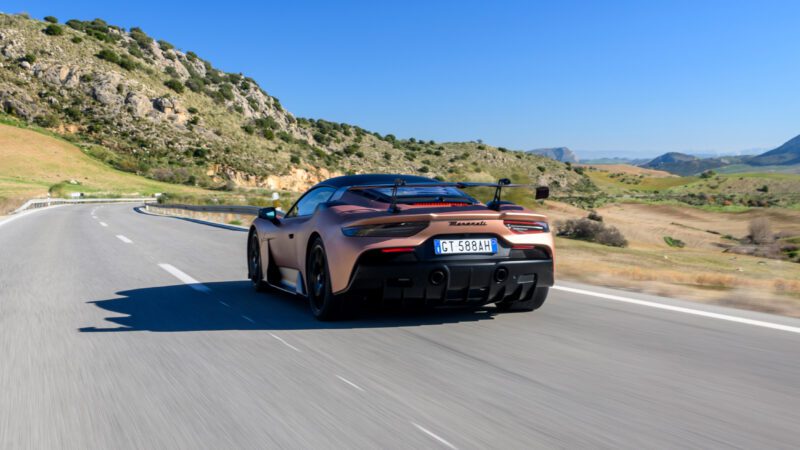
By borrowing extensively from the MC20, the GT2 Stradale recreates many of its on-road manners. Although a longer test drive might reveal subtle nuances not detectable in a total drive time of around an hour, they didn’t stand out on this brief first drive.
Outside of a track day, this special edition’s most significant differences are its excellent racecar-inspired styling, carbon fiber and Alcantara interior, and spectacular Sabelt buckets. Because while everyone swoons over the trending Porsche or Ferrari models, the GT2 arrives as a more IYKYK option. Still, even as Maserati plans to cap its production at 914 units, its nearly $80,000 price jump to $311,995 remains tough to stomach.
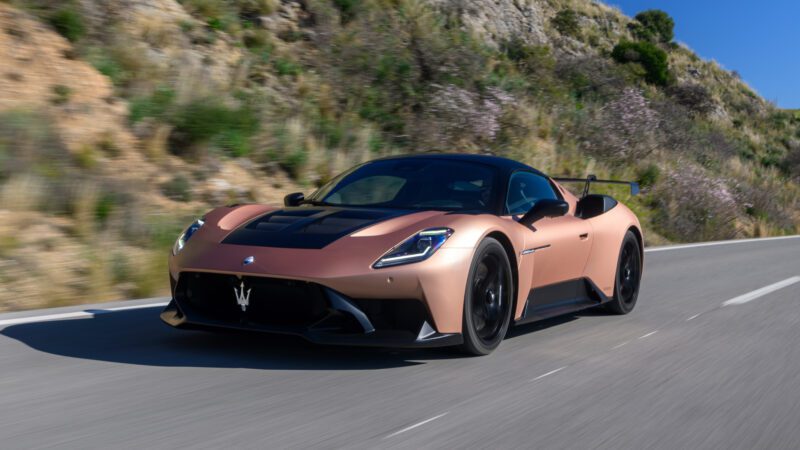
The trouble is, for that sum, there are more than a few compelling rivals on offer. The obvious first choice is the GT3 RS and its 9,000 rpm screaming flat-six, whose theatrics far exceed the V6 GT2’s. For over $300,000, you can even account for the inevitable dealer markup that’ll accompany it. Suppose the ultimate sensation of connectedness and involvement is more your speed. In that case, the McLaren 750s exists, and if raw sound is the priority, the naturally aspirated Corvette Z06 offers it for less than half the Stradale’s cost.
While the GT2 Stradale is the Trident’s first limited-run special in decades, this brief first encounter creates the impression that it’s great in isolation. Yet by offering an experience so similar to the MC20’s, when stacked against the industry’s best, it doesn’t feel special enough.

